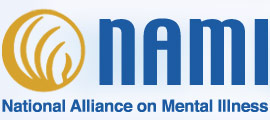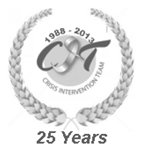Education
BSF ACTOR TRAINING
We provide training for all actors involved in CIT in Minnesota, no matter which CIT program they work for. Actors in Wisconsin, South Dakota and North Dakota are trained as well. Curriculum introduces the actors to the mental health and de-escalation framework we use to train first responders. We train them in the specific scenarios they will present in the trainings and instruct them on their role as actors within the training. 
PBS NEWSHOUR SEGMENT ON THE STATE OF OUR MENTAL HEALTH SYSTEM
Broadcast Tuesday, January 18, 2011
This week Public Television Stations will rebroadcast ‘Minds on the Edge’ which explores public policy hurdles of Mental Illness.
GETTING IT RIGHT
This short documentary video was developed to introduce the CIT (Crisis Intervention Team) model and to spark discussion about our mental health and criminal justice systems and about how we can work together: mental health advocates, criminal justice professionals, and mental health professionals, to make needed improvements. This video is not intended to provide a comprehensive picture of the mental health or the criminal justice system. It might be most effectively used as part of a more comprehensive CIT or related training. It deals with mental health crisis response issues and does not intend to reduce the vast spectrum of mental health related issues to mental health crisis issues. It has been used to help law enforcement partners, and mental health partners to focus on how we can work together to improve mental health crisis response and to prevent crisis events. We view reform of our crisis response system as one piece of a broader agenda of strengthening the health care response to mental illness and developing the knowledge and resources needed to adequately support recovery for individuals who have a mental illness. We suggest that if you use this video to start discussion in your community you invite us to meet with you to discuss the video and CIT, or at a minimum, consider the questions in the following discussion guide. If you discuss these questions with others, you might not always agree, but you have gotten the conversation started and hopefully can agree on areas you can work on together in the future.
Discussion Guide
- After seeing the video, what are some ways you think CIT might improve the mental health crisis response system in your community?
- Do you recall when we closed the big state hospitals in Minnesota like Fergus Falls, etc? What was the impact of closing those facilities? The state has opened other smaller psychiatric hospitals around the state. Is there one in your community?
- What is the relationship between the crisis response system and the systems that provide long term support for individuals with a mental illness in your community?
- Do you think there is an adequate community based mental health system in your community? What are it’s components and what additional improvements might you suggest?
- How long does it sometimes take to get a correct diagnosis and an effective treatment of a mental illness, in your experience?
- What is the relationship of homelessness to mental illness?
- What is the relationship of substance abuse to mental illness?
- What is the relationship of developmental disabilites, traumatic brain injury and other brain related problems to mental illness?
- Is the stigma of mental illness related to the fear of mental illness?
- Can mental health professionals work with police officers in mental health crisis events? Can they work together in other ways? If so, how?
- Do you think helping people understand what visual and auditory hallucinations are, helps them understand severe mental illness?
- Who should respond to mental health crisis calls? Police, EMS, mobile crisis? What training should they receive?
- What do you think we need to change in the first responder system and the mental health system in your community to improve the response to individuals with a mental illness, or as Charles Jensen says in the video, “to Get it Right?”
U.S. SENATE COMMITTEE ON VETERANS’ AFFAIRS
Hearing on VA’s Response to the Needs of Returning Guard
& Reserve Service members, Chairman Daniel K. Akaka, July,23, 2008
Welcome to today’s hearing. Today the Committee will look at the effectiveness of VA’s outreach to the over 488,000 members of the National Guard and the Reserves who have been mobilized and deployed as part of either Operation Iraqi Freedom or Operation Enduring Freedom. While the Committee has held multiple hearings on VA benefits, health care, and services, this is the first time we are specifically focusing on the unique challenges confronting members of the Guard and Reserves.
In my own state of Hawaii, over 5,000 members of the Guard and Reserve have been deployed in support of O.I.F. and O.E.F. The Hawaii National Guard is currently in the midst of its second deployment to Iraq and over 85 percent of those mobilized are already combat veterans. It is important that these soldiers, and all reservists, know that VA will be there for them when they return, and in a manner that recognizes their sacrifices and helps them overcome any obstacles specific to their circumstances.
After years of war, we appreciate that there are distinct challenges facing the reintegration of these citizen servicemembers. Unlike their active duty counterparts, Guard and Reserve veterans must transition from their civilian life and employment, to active-duty military life and service, and back again, sometimes on multiple occasions as a result of numerous deployments. Despite VA’s best efforts to conduct outreach to this population, it seems clear that some are still unaware of all that VA has to offer and how to access those services and benefits.
I am concerned about the results from a recent VA IG report that shows that, in 2006, VBA failed to send benefits packages to over 36,000 reservists because VA employees mistakenly thought these reservists were ineligible. One would have thought that after years of war, this process would be perfected. I am also concerned about how VA reaches out to members of the Individual Ready Reserve and those who are discharged after their deployment and who may not have the benefit of a unit’s support during their reintegration. I am pleased that, beginning this fall, VA will resume using public service announcements and advertising, which will provide another means to reach the entire veterans population.
More work needs to be done. I hope that both of our panels will shed some light on why we continue to hear from veterans that they just did not know about what VA benefits and services they are eligible for and on how VA, and the Congress, can help bridge this information gap. This is particularly important for those who suffer from the invisible wounds of this war and may need more help readjusting to their civilian lives. I hope today’s witnesses will provide us with a real sense of next steps so that no member of the Guard and Reserves is unaware of their eligibility and the benefits available to them. Thank you

MAJOR CYNTHIA M. RASMUSSEN RN, MSN, CANP COMBAT STRESS OFFICER SEXUAL ASSUALT RESPONSE COORDINATOR 88TH REGIONAL READINESS COMMAND
July,22,2008– My Testimony today reflects my personal views and does not necessarily reflect the views of the Army, the Department of the Army, the Department of Defense or the Administration.
INTRODUCTION Chairman Akaka, Senator Burr, and Distinguished Members of this Committee, and all others attending, thank you for the opportunity to talk today on behalf of Service members, Veterans and their families who are experiencing Reintegration, or, coming home from Deployment. I welcome any questions from this panel to fully detail what we offer.
I have been mobilized for 3 years as a member of the Combat Stress Control Team at the 88th Regional Readiness Command (RRC). Following the end of my tour, I will return to my civilian position at the Minneapolis Veterans’ Administration facility. The 88th is the Army Reserve Command for Service Members in six Midwestern states (Minnesota, Wisconsin, Michigan, Ohio, Indiana, and Illinois). Shortly after 9/11, the RRC mobilized LTC Susan Whiteaker, a Licensed Clinical Social Worker (LICSW) and LTC Mary Erickson, Occupational Therapist (OT). They organized this team to care for the mental health needs of the Service Members and Families in the region during the entire deployment cycle to include Reintegration. Our comprehensive program has served thousands of Service Members, Commanders, Family members, Employers and Communities through education, support, crisis intervention, and referrals.
The 88th RRC Surgeon’s Office Combat Operational Stress Control (COSC) Team provides a comprehensive program of education, assessment, brief intervention and referral to meet the behavioral health needs of Soldiers, Families, and the community. Mild Traumatic Brain Injury (mTBI)/Post Traumatic Stress Disorder (PTSD) are the signature injuries of the campaigns in Iraq and Afghanistan. Most programs, while well constructed and resourced, are passive in nature. This requires the injured Service Member, or his/her Family, to not only recognize the problem, but also to figure out where to seek help, and to gain the knowledge to fight through the red tape to get the help they need. Since 2003, the 88th RRC has a very effective program in place that helps its units, Soldiers, and Families, removing a good portion of the administrative, medical, and financial burden these injuries can cause.
Education begins before a Soldier is deployed, with a variety of briefings that establish rapport between the command and the Soldiers’ families. It is critical they know there is a place they can go to for assistance, answers, and counseling. The education and support network continue throughout the mobilization processing, the actual deployment, and following deployment. The period following deployment is critical. The majority of Reserve Component (RC) Soldiers just want to go home. They are not thinking too much about what occurred in the previous twelve to fifteen months, they think they can ‘forget it’. That is what makes the Post Deployment Health Assessment (within six months of their return) invaluable.
Our various programs have made leaps and strides in terms of delivery of care and resources. In 2005 alone, grief seminars for families were initiated and conducted. We received a $10,000 Health Promotions Programs Incorporated (HPPI) grant from the U.S Army Center for Health Promotion and Preventive Medicine (CHPPM) for Soldier/Family Wellness Programs throughout the Command. We reached out to our National Guard partners to assist in Anger Management classes and other training for redeploying units, to name just a few accomplishments. Our successes continued into 2008 including providing numerous Mental Health First Responder courses, our continuing to provide reintegration education and support for Veterans’ Affairs staff throughout the country, and received numerous awards for our various programs and efforts.
There are several recommendations resulting from our work. Customer care must be a number one priority. Success depends on inter-service, joint programming across all government and civilian organizations that have a stake in the health of the Service Members and Families. All of us need to enhance the whole Family system, ensuring the entire Soldier Family is taken care of and heard. Staffs across the medical spectrum who work with Service Members and Veterans must be culturally competent. They need to understand the Warrior mindset and how that translates into Warriors as civilians and consumers and be able to design care based on their unique needs. From this, it should be understood that the same personnel in the spectrum must be held accountable for abuse and/or inappropriate behavior towards a Service Member or Veteran.
We recognize the need to work hand in hand with the Department of Defense to provide “seamless transition” care for all Service Members/ Veterans and Families, not just those who are seriously wounded. Medical providers must be able to recognize, articulate and care for the Service Member with Combat Operational Stress Reaction before the sequences of events results in serious life-altering consequences. Veterans have multiple and complex issues. Our legacy systems of “stovepipe care” are out-dated and ineffective. If the Service Members are Reserve Soldiers or Guard Members, include their commands and battle buddies, wingmen, shipmates, and so on, in their care. All of us need to recognize that reintegration issues are a part of the challenge of caring for Veterans and Families. Again, I thank this committee for the opportunity to explain, in part, what we’re doing at the “Blue Devils” Command, the 88th RRC, and our efforts at reaching across component and service lines to ensure no one is “lost” because of negligence or inattention.






